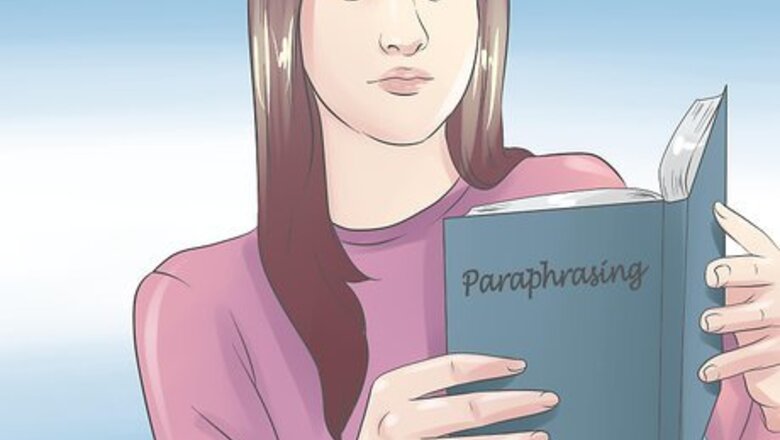
views
Understanding the Basics
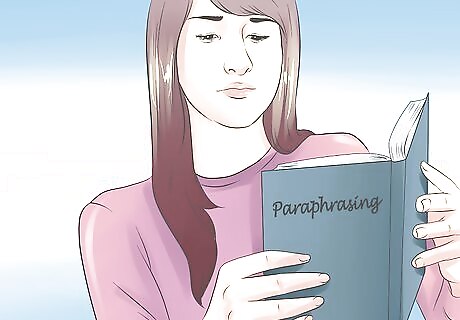
Know what ‘paraphrasing’ means. “Paraphrasing” is saying something someone else has said in your own words. You still express the same ideas, just in a different way. It can be a useful skill to have, especially if you are trying to write an essay or article. Of course, you always want to give credit when you use someone else’s ideas, but paraphrasing gives you a chance to say it in your own words instead of using a direct quotation. By stating it your way, the information may fit better into what you’re writing, allowing your writing to flow more easily from one idea to the next.
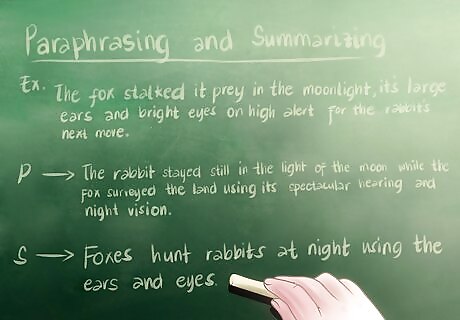
Be aware of the differences between paraphrasing and summarizing. Paraphrasing may sound suspiciously like summarizing, but they are actually two different methods of rewriting a text. In both methods, you are putting the text in your own words, though summarizing sometimes uses some of the same phrases as the original, depending on your end goals. For example, let’s say the original writing is: “The fox stalked its prey in the moonlight, it’s large ears and bright eyes on high alert for the rabbit’s next move.” Example of a paraphrased sentence: “The rabbit stayed still in the light of the moon while the fox surveyed the land using its spectacular hearing and night vision.” Example of summarization: “Foxes hunt rabbits at night using their ears and eyes.” Summarizing focuses on the facts of the statement rather than the details.
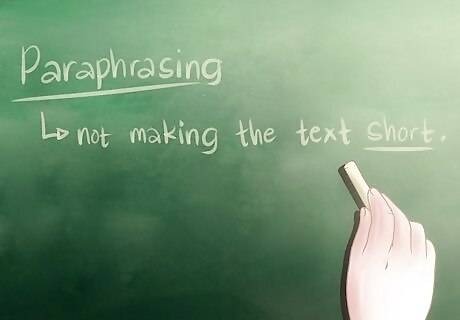
Understand that paraphrasing doesn’t necessarily mean making the text shorter. When you summarize, you are trying to take a longer text and make it into a shorter, succinct text using your own words. This is not the case with paraphrasing. In fact, sometimes your paraphrased paragraph might be slightly longer than the original, depending on the words you choose. When you paraphrase, try to be as accurate as possible.
Paraphrasing Correctly
Develop an understanding of the original text. Look over the paragraph you want to paraphrase at least 3 times so you can understand the meaning behind it. Look up any words that you’re unfamiliar with. This will help you choose the most accurate words later on.

Change the original word choice. When you paraphrase, you must change the diction, or words being used. That is, as a writer you have your own unique way of explaining an idea, and therefore, your diction is important. “Diction” just means the words you choose to make your point. When you are paraphrasing, you must choose different words than the ones in the original text to explain the same idea. Example: The words you would choose to tell someone how to ride a bike are different from the words another writer would choose. Someone else may say “Climb on the bike,” while you might say, “Sit on the bike seat.” Both have essentially the same meaning—“Get on the bike”—yet they are worded differently.
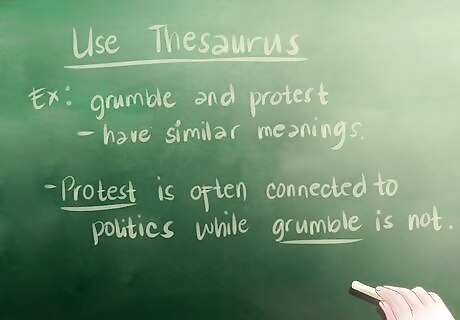
Use a thesaurus to help you with word choice. You can use a thesaurus if you can’t think of another word to convey the same idea, as it can remind you of other similar words you already know (these words are called synonyms). Be careful to only use words that you are sure fit, however, as a word you don’t know may have a connotation that isn’t appropriate for the paragraph. “Connotation” is the feeling a word has beyond its literal meaning. For instance, “grumble” and “protest” have similar meanings, and they would be listed as synonyms in a thesaurus. However, they have different connotations. For instance, “protest” is often connected to politics while “grumble” is usually associated with complaining.
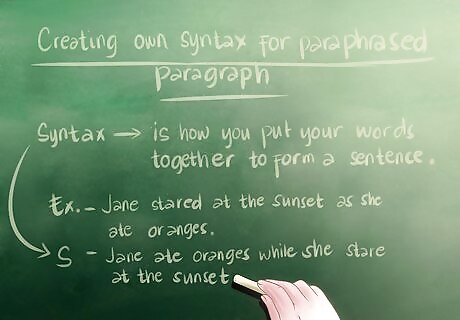
Create your own syntax for your paraphrased paragraph. Paraphrasing doesn’t just relate to word choice; it also has to do with syntax and structure. “Syntax” refers to the order of the words when you form a sentence. For instance, “Jane stared at the sunset as she ate oranges” is syntactically different from the sentence “Jane ate oranges while she stared at the sunset.”
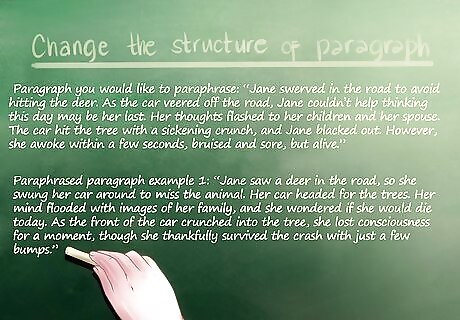
Try to change the structure of the paragraph. “Structure” is how sentences and paragraphs are put together. Of course, you want to put the sentences in your paragraphs together in a way that makes sense. You want to lead your reader through the idea you are presenting. Nonetheless, you still have some wiggle room in how a paragraph goes together. When you’re paraphrasing, you can’t just replace words in the text with synonyms (words that mean the same thing) and call it done. You actually need to restructure it until it is a completely new paragraph that conveys the same idea. Paragraph you would like to paraphrase: “Jane swerved in the road to avoid hitting the deer. As the car veered off the road, Jane couldn’t help thinking this day may be her last. Her thoughts flashed to her children and her spouse. The car hit the tree with a sickening crunch, and Jane blacked out. However, she awoke within a few seconds, bruised and sore, but alive.” Paraphrased paragraph example 1: “Jane saw a deer in the road, so she swung her car around to miss the animal. Her car headed for the trees. Her mind flooded with images of her family, and she wondered if she would die today. As the front of the car crunched into the tree, she lost consciousness for a moment, though she thankfully survived the crash with just a few bumps.”
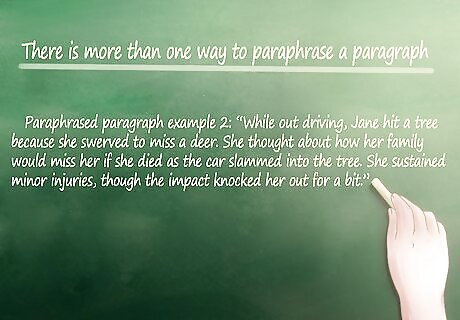
Keep in mind that there is more than one way to paraphrase a paragraph. It’s important to note that there is any number of ways to rewrite a paragraph, as many as there are writers. For instance, the same paragraph used in the previous step could be paraphrased in a different way that is not as vivid, and not quite as detailed. Nonetheless, it still tells the reader the same information using different wording. Paraphrased paragraph example 2: “While out driving, Jane hit a tree because she swerved to miss a deer. She thought about how her family would miss her if she died as the car slammed into the tree. She sustained minor injuries, though the impact knocked her out for a bit.”













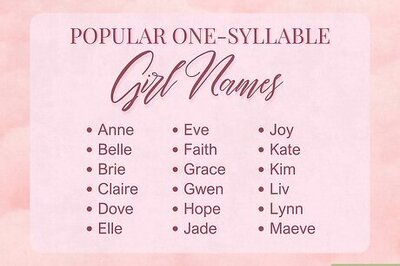






Comments
0 comment